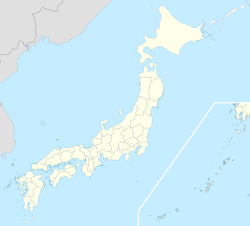The trip back took a little over 12 hours. The trains weren't running quite to the schedule below - I assume due power saving timetables that aren't fully accounted for on the electronic search engines. Several of the changes were quite tight, and for someone who didn't read Japanese, knowing the incoming and outgoing platform numbers (as shown below) would make it easier to change smoothly.
No great insights from the trip back but a couple of observations. It seemed like the Ofunato 大船渡 and Kessenuma 気仙沼 lines are running again (they go to the tsunami affected Sanriku Coast). The changes at Ishinomaki, 石巻 Sendai 仙台and Kogota 小牛田 were to short to investigate thoroughly though. JR East has been doing a remarkable job getting things operational again. (perhaps the Japanese govt. could go to them for advice...)
I have just checked on the JR East website and they are running, but not the full distance.
JR East also appears to be putting quite a bit of money into station redevelopment. Yokote 横手 in particular was in the process of being done up.
Fukushima station area was very quiet - reports on the news were saying the other day that the population of the prefecture has dropped to the lowest level in 33 years. I am not sure that the quietness of the station area is a product of that however - maybe more to do with school holidays and the time of day.
Also at Fukushima there was an older - perhaps 60 or more - woman working in the JR ticket office. I was quite surprised. I don't ever remember seeing and older woman working in anywhere other than the newspaper selling kiosks. Until recently JR, like the police, seemed to be the province of men. It's not necessarily a great leap for equal opportunity, I would put money on the fact that she is working there as a part time worker on abysmal pay rates with no benefits.
I have discovered more trainlines I want to go on, so the seishun 18 bug is likely to be back again next year.
Japanese maps of JR East's trainlines. There don't seem to be English maps.
 |
The Kitakami line from Yokote to Kitakami.
A one car, "one man" train. |
 |
| Yokote station being done up |
 |
| It looks like it will be rather like Shinjo, Yamagata & Akita stations. |
 |
| Sign speaks for itself. |
 |
There are two train line through Yokote 横手- the north -south Ou 奥羽Line
and the East West Kitakami 北上line. |
 |
| lots of trees, ricefields and red bridges on the Kitakami line |
 |
and rivers.
|
 |
A lot of the stations are unattended and you get a ticket
as you get on and pay the driver as you get off if it's a one man
train, or pay the conductor if there is one.
At unattended stations, only the door near the driver opens. |

 I am back from a week in Iwate prefecture where I spent time helping with the tsunami clean up in Rikuzen Takata local government area. (see the map below- it's three places north of Sendai). Rikuzen Takata was one of the towns hit worst by the tsunami. The town proper, built behind a tsunami wall that gave a false sense of security, actually no longer exists. The city hall, main hospital, library, shopping area, several schools, railway station, were swept away in the tsunami. In the town proper, the only remaining buildings are solid concrete structures that are more than 4 stories. A third of city hall employees were killed. Almost 3,000 people of a population of 26,000 in the local area are dead or missing.
I am back from a week in Iwate prefecture where I spent time helping with the tsunami clean up in Rikuzen Takata local government area. (see the map below- it's three places north of Sendai). Rikuzen Takata was one of the towns hit worst by the tsunami. The town proper, built behind a tsunami wall that gave a false sense of security, actually no longer exists. The city hall, main hospital, library, shopping area, several schools, railway station, were swept away in the tsunami. In the town proper, the only remaining buildings are solid concrete structures that are more than 4 stories. A third of city hall employees were killed. Almost 3,000 people of a population of 26,000 in the local area are dead or missing. 










